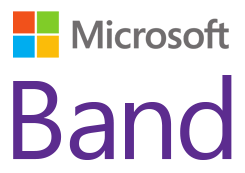Mobile Communications Business Group, Sony Corporation and in short, Sony Mobile is a multinational telecommunications company founded on October 1, 2001 as a joint venture between Sony Group Corporation and Ericsson, headquartered in Tokyo, Japan and wholly owned by Sony. It was originally incorporated as Sony Ericsson Mobile Communications, and headquartered in London, England, until Sony acquired Ericsson's share in the venture on February 16, 2012. On April 1, 2021, Sony integrated its electronics businesses including Sony Mobile into one company called Sony Corporation.
A mobile operating system is an operating system for mobile phones, tablets, smartwatches, 2-in-1 PCs, smart speakers, or other mobile devices. While computers such as typical laptops are 'mobile', the operating systems used on them are generally not considered mobile ones, as they were originally designed for desktop computers that historically did not have or need specific mobile features. This distinction is becoming blurred in some newer operating systems that are hybrids made for both uses.

MeeGo is a discontinued Linux distribution hosted by the Linux Foundation, using source code from the operating systems Moblin and Maemo. Primarily targeted at mobile devices and information appliances in the consumer electronics market, MeeGo was designed to act as an operating system for hardware platforms such as netbooks, entry-level desktops, nettops, tablet computers, mobile computing and communications devices, in-vehicle infotainment devices, SmartTV / ConnectedTV, IPTV-boxes, smart phones, and other embedded systems.

A smartwatch is a wearable computer in the form of a watch; modern smartwatches provide a local touchscreen interface for daily use, while an associated smartphone app provides for management and telemetry. While early models could perform basic tasks, such as calculations, digital time telling, translations, and game-playing, 2010s smartwatches have more general functionality closer to smartphones, including mobile apps, a mobile operating system and WiFi/Bluetooth connectivity. Some smartwatches function as portable media players, with FM radio and playback of digital audio and video files via a Bluetooth headset. Some models, called watch phones, have mobile cellular functionality like making calls.

The Nokia N9 is a smartphone developed by Nokia, running on the Linux-based MeeGo mobile operating system. Announced in June 2011 and released in September, it was the first and only device from Nokia with MeeGo, partly because of the company's partnership with Microsoft announced that year. It was initially released in three colors: black, cyan and magenta, before a white version was announced at Nokia World 2011.

Mer was a free and open-source software distribution, targeted at hardware vendors to serve as a middleware for Linux kernel-based mobile-oriented operating systems. It is a fork of MeeGo.

Pebble is a discontinued smartwatch developed by Pebble Technology Corporation. Funding was conducted through a Kickstarter campaign running from April 11, 2012 to May 18, 2012, which raised $10.3 million; it was the most funded project in Kickstarter history, at the time. Pebble began shipping watches to Kickstarter backers in January 2013. Pebble watches can be connected to Android and iOS devices to show notifications and messages. An online app store distributes Pebble-compatible apps from many developers including ESPN, Uber, Runkeeper, and GoPro.

Jolla Oy is a Finnish technology company; vendor and developer of Sailfish OS. Headquartered in Tampere, Finland, Jolla has its own research and development offices in Helsinki, Tampere and Cyberport, Hong Kong. Jolla was founded in 2011 by former Nokia staff of the MeeGo project team to use the MeeGo opportunities and its "endless possibilities".

Sailfish OS is a Linux-based operating system based on free software, and open source projects such as Mer as well as including a closed source UI. The project is being developed by the Finnish company Jolla.

The Jolla smartphone is a smartphone produced by Jolla that runs the Sailfish OS. Following a successful crowdfunding campaign, it was manufactured in China and released on 27th November 2013.
Kreyos was a consumer electronics company based in San Francisco, California. The company intended to develop digital wearable devices fitted for people with active lifestyles. The Kreyos Meteor, the company's first product, started as a crowd funding campaign from Indiegogo. Although the campaign was funded to over ten times its original goal, the resulting product was poorly received, many units were not delivered or were defective, and the company was closed in 2014.

Wear OS is a version of Google's Android operating system designed for smartwatches and other wearables. By pairing with mobile phones running Android version 6.0 or newer, or iOS version 10.0 or newer with limited support from Google's pairing application, Wear OS integrates Google Assistant technology and mobile notifications into a smartwatch form factor.
Launched in June 2014 as alpha phase software for testers-volunteers, the software by Jolla designed to replicate Sailfish OS user interface behaviour and features on Android OS devices.
Pebble Time is a smartwatch developed by Pebble Technology and assembled by Foxlink, released on 14 May 2015. This is the first Pebble to introduce a color e-paper display, as well as a microphone, a new charging cable and a new Pebble Time-optimized operating system.
Aqua Fish is a smartphone produced by Intex Technologies that runs the Linux based Sailfish OS 2.0 released in July 2016 costing about Rs 5,000, whose hardware specification is nearly identical to Jolla C, a limited-edition mobile phone released in May 2016 by Jolla geared toward Community and Developers, only with different cellular bands set. It is historically the first mobile device launched by OEM with Sailfish OS licensed from Jolla. The licensed OS allows to launch and use Android software simultaneously with native OS software. It is the first device in a strategy for establishing Sailfish OS as the common and official operating system for the BRICS countries. The device was on display for the first time during World Mobile Congress 2016 at Barcelona in Spain.

Microsoft Band 2 was the second-generation smart band with smartwatch features developed by Microsoft. Announced on October 6, 2015, it succeeded the original Microsoft Band and was initially available in the United States, United Kingdom and Canada. It was later also available in Australia through the Sydney flagship store, Microsoft online store, and selected retailers such as JB Hi-Fi and Harvey Norman. Like its predecessor, it incorporates fitness tracking and is compatible with Windows, iOS and Android smartphones via a Bluetooth connection. On October 3, 2016, it was discontinued. On May 31, 2019, the Band's companion app stopped working and Microsoft offered refunds for customers who were still active platform users.

The Sony Xperia X is an Android smartphone produced by Sony. Part of the Sony Xperia X series, the device was unveiled along with the Sony Xperia XA and Sony Xperia X Performance at MWC 2016 on February 22, 2016. The Sony Xperia X series will replace the former Sony Xperia Z series, as confirmed by Sony Mobile's senior product marketing manager Jun Makino in February 2016.
Accione is a low-cost hi-tech smartphone with Sailfish OS or Android from the Bolivian company Jala group developed in cooperation with Jolla. It is intended for Latin America customers, for the first time announced at Mobile World Congress on 27 February 2017 in Barcelona. The OS is open source Linux and have ability to serve additional closed source components from 3rd sides built-in the OS special layers for personalisation and marketing purposes by partner manufacturing a particular device. The real multitasking of Sailfish OS allows to run and use together many software applications, switching them in the fly in real time, without freezing them in background. Number of apps running together is not fixed by OS, but it is limited by amount of memory every next app requires to run and amount of free memory available at the device, until next app can't be launched.

Bragi is a German technology company headquartered in Munich, Germany, that designs, develops and sells wireless smart earphones; the Bragi OS, the operating system for next-generation computing platforms; and the Bragi App for smartphones.












